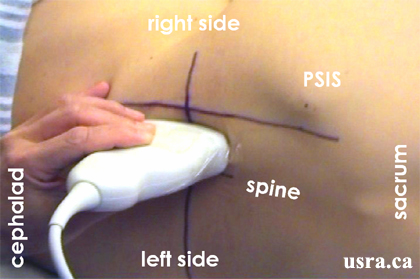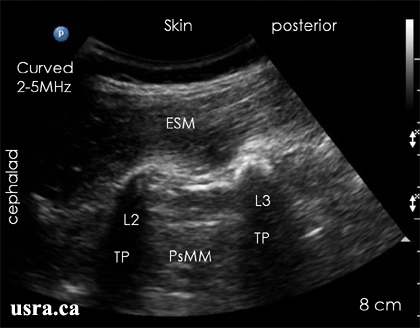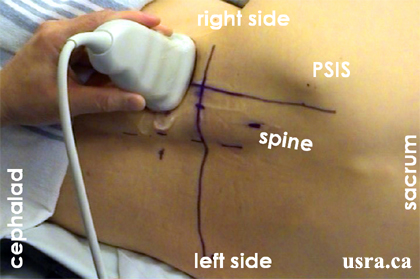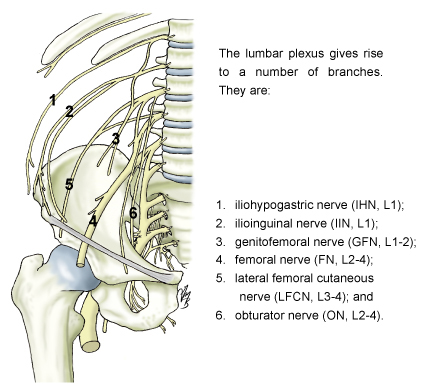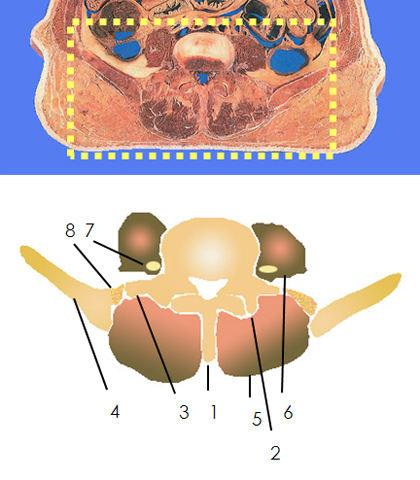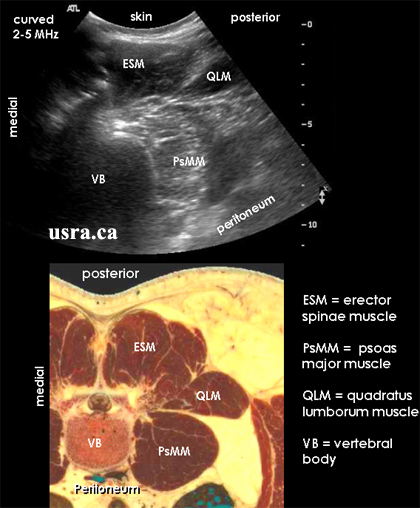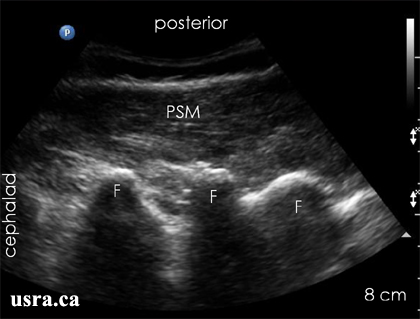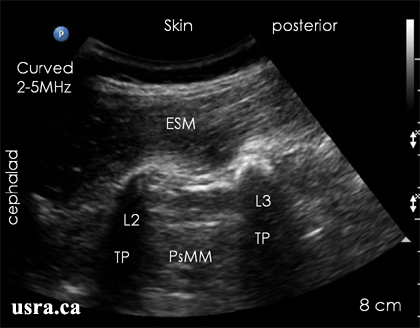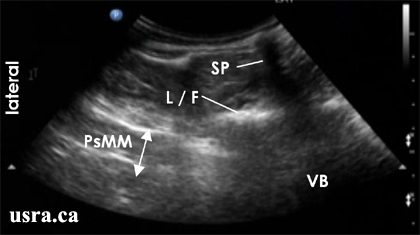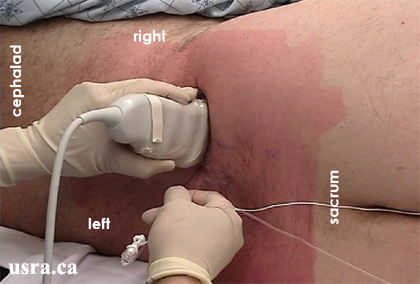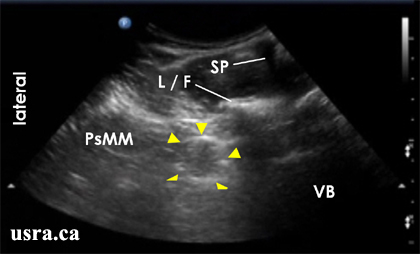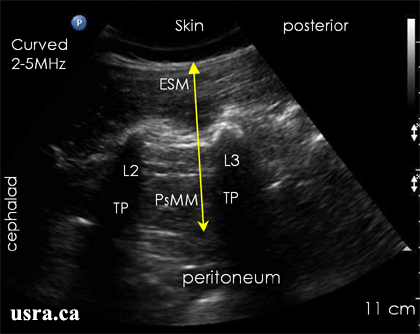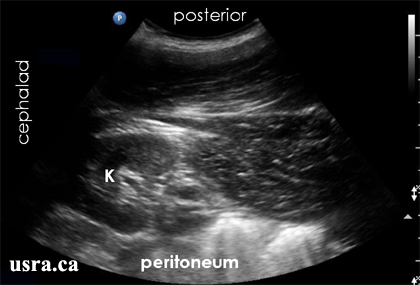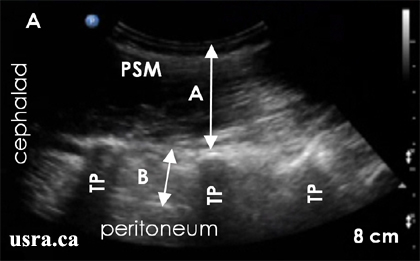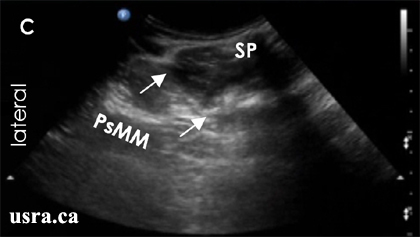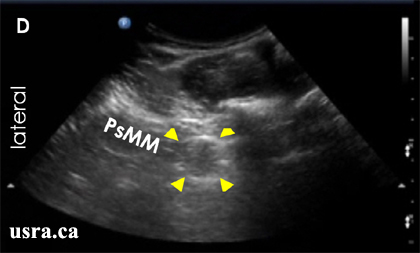Nerve Localization
- The adult lumbar plexus lies deep within the psoas major muscle. It is
usually not visualized under ultrasound but is expected to lie
within the posterior 1/3 of the muscle bulk.
- The goal of ultrasound guided lumbar plexus block is to visually
identify the transverse process and the psoas muscle and to
determine the distance from skin to these 2 structures thereby
allowing the operator to estimate the depth of the lumbar plexus
prior to needle insertion.
- Perform a systematic anatomical survey from medial (spinous process)
to lateral (transverse process).
- A paravertebral longitudinal scan locates several (2-3) lumbar
transverse processes in the paravertebral space. Note the depth
of the transverse processes.
- Identify the paraspinal muscles (PSM, i.e., erector spinae and
quadratus lumborum muscles) superficial (posterior) to the
transverse processes.
- Also identify the psoas muscle deep (anterior) to the transverse
processes.
- Move the transducer more medially to assess the facet joints
(pictures below).
- Then move the transducer laterally to assess the length of the
transverse processes. The bony shadow will disappear when scanning
lateral to the transverse process (picture below).
1. Longitudinal Scan Showing the Facet Joints Medially
The facet joints (F) are seen as a continuous hyperechoic line with the hypoechoic bony shadows below.
PSM = paraspinal muscle
2. Longitudinal Scan Showing the Transverse Process
The bony shadows of the transverse processes (TP) and the psoas major muscle (PsMM) in between the transverse processes are seen.
ESM = erector spinae muscle
3. Deeper Longitudinal Scan
This deeper scan shows the depth of the psoas major muscles
(PsMM, approximately 7-8 cm from the skin, yellow arrows). The
peritoneum (white arrows) is visualized deep to the PsMM.
ESM = erector spinae muscle
TP = transverse processes
Now place the transducer in the transverse plane at the level of the
intended block between the transverse processes after the
longitudinal scan. In this view, the transverse process bony shadow
is not seen.
A Transverse Scan Showing The Psoas Muscle
L/F = lamina/facet
PsMM = psoas major muscle
SP = spinous process
VB = vertebral body
